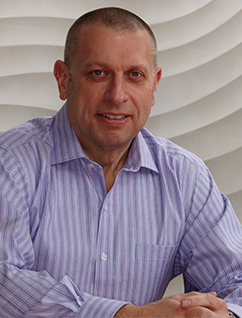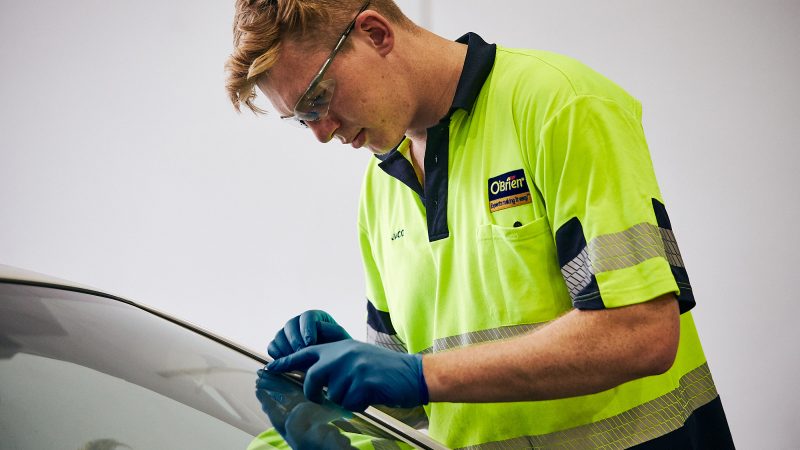Consumers are constantly looking for faster, more economical, more sustainable, more comfortable and safer ways to get from point A to point B and, as our cars change to accommodate our needs, so too do our windscreens.
More and more technology is being built into windscreens and as things like heads up display (more on that later) become common practice, O'Brien® stays close to the changing technology and adapts accordingly.
Already in operation in Australia is Cal-Tech®, an innovative recalibration solution for various types of vehicles that O'Brien® has developed in partnership with BOSCH. Cal-Tech® is available at all O'Brien® AutoGlass branches and means the advanced driver assist systems (ADAS) built into a car (parking assist, adaptive cruise control and blind-spot detectors are just some examples) are recalibrated at the same time the windscreen is replaced or repaired.
In Australia, the number of vehicles on the road, equipped with driver assistance technology, is estimated to jump from 21% in 2019 to 46% by 2025. O'Brien® has seen a 175% increase in demand for Cal-Tech® ADAS Recalibration in the last 12-months and continues to work with leading industry players and research institutions to make sure we’re always at the cutting edge of this developing technology.
Compared to what is in the pipeline for automotive technology, this is just the tip of the iceberg.
Dr Chris Davies, Head of Technical Research and Innovation at Belron® Technical (part of Belron®, which is the parent company of O'Brien Australia) shared with us some insights on what we can expect into 2021 and beyond.
Spoiler alert – no time travelling hovercrafts on the horizon just yet.
Q: What will be the biggest change to windscreen technology this year?
A: We don’t expect a radical change in windscreen technology this year, but the steady growth of forward-facing camera fitment will continue. In Europe, it will be mandatory for vehicle manufacturers to introduce advanced driver assistance systems (ADAS) into their new models by 2022 and on all models sold by 2024, with a consortium pushing for a similar introduction in the US. This means that camera fitment is set to grow and we expect that these will be fitted to 100% of new vehicles from 2024 in Europe. We also anticipate steady growth in heads up display (HUD) technology fitment over time as vehicle manufacturers focus more on safety and ensuring that drivers stay focused on the road ahead. The new Mercedes S Class has an augmented reality windscreen where not only is vehicle performance information, such as speed and fuel levels, projected on the screen, but also additional driver relevant information such as navigation instructions. These technologies will not only impact the windscreen complexity and the installation process but could also require additional recalibration steps as the functionality is dependent on the forward-facing camera.
Q: Could you explain a bit more about augmented technology in windscreens and how this will be used in the future?
A: Heads up display (HUD) and Augmented Reality (AR) windscreens are intended to keep the driver focused on the road ahead by providing essential information in their line of sight, rather than on another device in the car. Our glass suppliers consistently inform us that they are working on AR projects with the vehicle manufacturers and that they expect to launch products in the near future. If the AR system is to overlay road and route relevant information onto the glass then the technology must know what is in front of the vehicle and where the driver is looking. This means that we expect the ADAS system forward-facing camera to monitor the road ahead and also potentially driver-facing cameras will be required for seamless operation. The complexity of an AR windscreen will probably impact on the cost of materials and will add to the difficulty of the replacement job in future with recalibration of the camera/s and adjustment of relevant projection optics being needed.
Q: How far away is this technology?
A: Mercedes is already introducing this technology on their premium level S-Class, but we expect this to filter down to other models over time. Over the next 2 to 3 years we expect other vehicle manufacturers to introduce this technology.
Q: How will O'Brien® technology have to adapt to cater to this new technology? What is already in place?
A: Belron® Technical will work on identifying the correct processes, skill and technology requirements to replace the glass and recalibrate the vehicle technology to help ensure the safe functioning of all systems. O'Brien® will need to ensure that the replacement parts are fit for purpose and that the technicians are supported with the relevant training and availability of tools and recalibration technology.
Click here to find out more about O'Brien® recalibration services using Cal-Tech®.
 |
To learn more about Chris, and his global knowledge and expertise on all things related to Automotive Technology and ADAS, you can follow him on LinkedIn |




